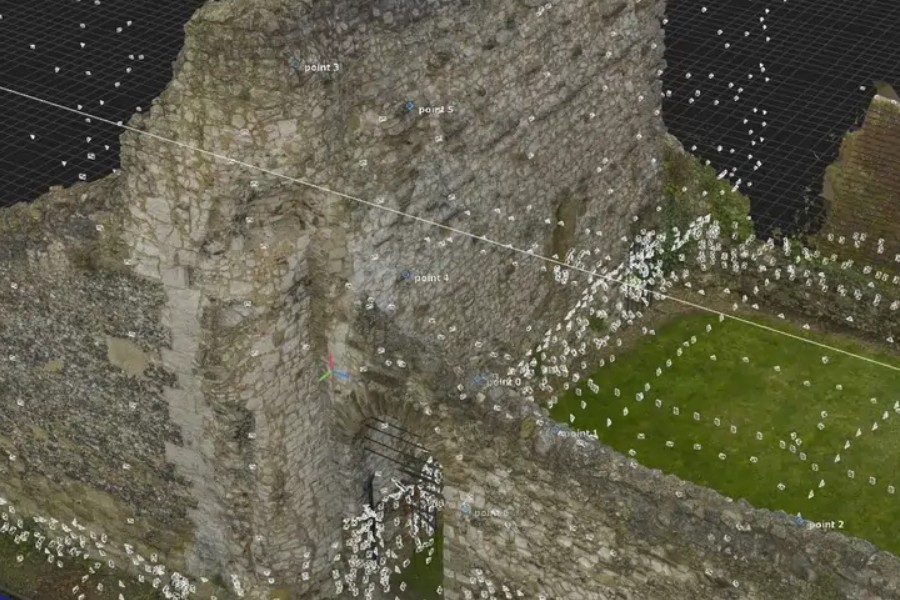
Photogrammetry stands as a transformative technique that marries the simplicity of photography to the complexity of 3D modeling.
As a process, it transcends mere image capture, inviting us into a world where two-dimensional snapshots evolve into full-bodied three-dimensional digital replications. The applications of this technology are broad and impactful, spanning from the meticulous documentation of archaeological sites to the dynamic world of virtual reality.
The Essence of Photogrammetry:
At its core, photogrammetry is the science of making measurements from photographs. The heart of this technique lies in the ability to fuse multiple images to construct accurate 3D models of natural landscapes, built environments, and even small artifacts. It harnesses the power of perspective, where each photo serves as an eye, and the disparity between images captured from different angles gives birth to depth perception.
Capturing the World: The Photographic Process:
The journey to a 3D model begins with capturing images. The process is methodical, requiring careful consideration of the subject’s size, the distance from it, and the desired resolution of the final model. Overlapping photos are taken from various angles, ensuring full coverage. High-quality cameras yield better results, but advances in technology have democratized photogrammetry, making it accessible even through smartphones.
From Images to Models: The Magic of Algorithms:
Once the pictures are taken, the true alchemy of photogrammetry takes place. Specialized software steps in to stitch the images together. It identifies common points across the overlapping images and uses these as anchors to triangulate distances and construct a virtual 3D space. This process, known as alignment, creates a dense point cloud that serves as the skeleton for the model.
Crafting the Digital Twin: 3D Reconstruction:
With the point cloud as a foundation, the software proceeds to weave a digital mesh, transforming a cloud of points into a textured 3D model. This mesh is essentially a network of interconnected triangles that approximates the surface contours of the photographed subject. Texture mapping drapes the model in realistic colors and patterns, breathing life into what was once a collection of mere points.
Precision and Accuracy: The Technical Backbone:
The accuracy of photogrammetric models is paramount, especially in scientific and engineering applications. To ensure precision, control points with known coordinates are often integrated into the photographic process. These benchmarks anchor the model in real-world coordinates, allowing for measurements and analysis that can rival traditional surveying methods.
Practical Applications: The Reach of Photogrammetry:
The utility of photogrammetry is far-reaching. In archaeology, it preserves the fleeting details of heritage sites. In architecture, it aids in the renovation of historic buildings. In film and gaming, it creates immersive environments. And in engineering, it facilitates the design and inspection of structures. The versatility of photogrammetry makes it a critical tool in numerous disciplines.
The Future of Photogrammetry:
As technology advances, photogrammetry continues to evolve. The integration of machine learning algorithms enhances the speed and accuracy of model creation. Augmented reality applications are beginning to rely on photogrammetric models to blend the digital with the physical. The potential for innovation is boundless, with photogrammetry at the forefront of a 3D revolution.
FAQs:
Q: What is photogrammetry?
A: Photogrammetry is the science and technology of obtaining reliable information about physical objects and the environment through the process of recording, measuring, and interpreting photographic images and patterns of electromagnetic radiant imagery and other phenomena.
Q: How does photogrammetry work?
A: Photogrammetry works by capturing multiple photographs from different angles and using software to triangulate the points in 3D space, creating a map of points called a point cloud. This point cloud can then be used to generate a 3D model of the photographed subject.
Q: What are the types of photogrammetry?
A: There are mainly two types of photogrammetry: aerial, which is performed from aircraft or drones and captures large areas, and close-range, which captures smaller objects from a shorter distance using handheld cameras or mobile devices.
Q: What equipment do I need for photogrammetry?
A: The basic equipment includes a camera with good resolution and manual control over settings, a tripod for stability, and photogrammetry software for processing the images into a 3D model. Additional equipment can include drones for aerial photography and GPS devices for georeferencing.
Q: Is photogrammetry expensive?
A: The cost of photogrammetry can vary widely based on the scale of the project and the equipment used. While professional setups can be quite costly, there are budget-friendly options available, including free photogrammetry software and the use of consumer-grade cameras or smartphones.
Q: Can I use my smartphone for photogrammetry?
A: Yes, many modern smartphones have cameras that are suitable for photogrammetry. There are also apps available that can process the images into 3D models directly on your phone.
Q: What is the accuracy of photogrammetry?
A: The accuracy depends on several factors, including the camera’s quality, the resolution of the images, the software used, and the methodology of capturing the images. Generally, photogrammetry can produce highly accurate results when done correctly.
Q: What are the applications of photogrammetry?
A: Photogrammetry has a wide range of applications, including but not limited to topography, architecture, forensics, archaeology, manufacturing, quality control, and the creation of visual effects in the entertainment industry.
Q: How long does it take to process a 3D model using photogrammetry?
A: The processing time can range from a few minutes to several hours, depending on the number of images, the resolution, the complexity of the subject, and the capabilities of the computer or device processing the images.
Q: Can photogrammetry be used indoors?
A: Yes, photogrammetry can be used indoors with proper lighting and setup. It’s often used in museums and other settings to create 3D models of artifacts and objects.
Q: Do I need special training to do photogrammetry?
A: While basic photogrammetry can be self-taught, especially with the many resources available online, professional-level photogrammetry might require more in-depth knowledge of photography, surveying, and 3D modeling techniques.
Conclusion:
Photogrammetry stands as a pivotal technology in our visual and digital-centric world. It allows us to capture the essence of our environment and artifacts in unparalleled detail, providing a bridge between the tangible and the virtual. As we continue to explore its possibilities, photogrammetry will undoubtedly shape the future of 3D modeling and continue to influence various industries around the globe.
- Elected Representatives Call On Mayor Adams To Support Fair Contracts For Healthcare Heroes
- Sponsored Love: Top 5 Packaging Styles of Popcorn Boxes To Engage Audience
- Mayor Adams Announces City’s Support Program Served 750+ Family Members Of Fatal Overdose Victims
- Planning A Proposal? Need Help Choosing A Ring? Rare Carat Can Assist!
- 7 Things You Can Do To Make Your Kitchen Look Luxurious From Harlem And Beyond
Become a Harlem Insider!
By submitting this form, you are consenting to receive marketing emails from: Harlem World Magazine, 2521 1/2 west 42nd street, Los Angeles, CA, 90008, https://www.harlemworldmagazine.com. You can revoke your consent to receive emails at any time by using the SafeUnsubscribe® link, found at the bottom of every email. Emails are serviced by Constant Contact








